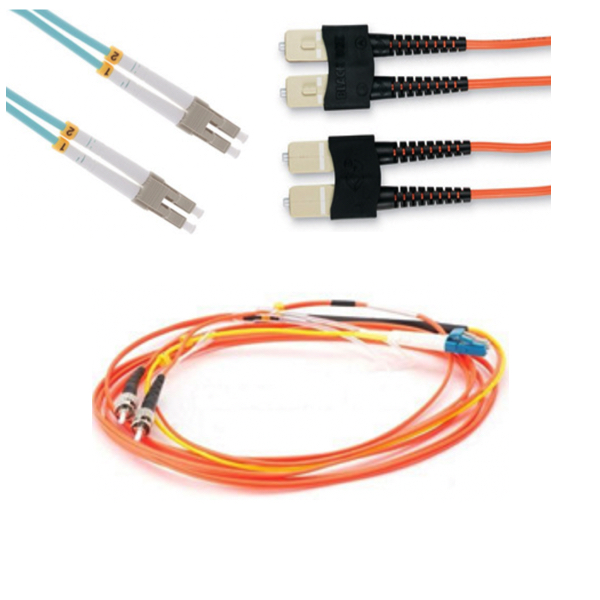Fiber Optic Cable & Accessories

Fiber optic cables ensure superior data transmission speeds compared to traditional copper cables. Why is this so? Fiber optic cables use strands of glass or plastic that have a really high level of light-receiving capacity, which offers a fantastic level of bandwidth.
Fiber optic cables come in different forms. You can find single-mode fiber optic cables for long-range communication because they can carry high bandwidth. On the other hand, multi-mode fiber optic cables clearly have a broader core diameter to carry more light-paths, and they are extraordinarily successful within vanishingly small light path 'crosstalk'. The construction of fiber optic cables consists of three elementary components: a core, a cladding layer around the core, and a protective outer jacket. This three-fold construction ensures the cables maintain good mechanical strength and enhanced protection from the environment.
More Information About Fiber Optic Cable & Accessories
Fiber optic cable accessories are pieces of equipment like connectors, strain relief, adapters, patch panels, and splice trays. These fiber optic accessories do several jobs to make a network connection secure and efficient. Connectors (like SC, LC, or ST) allow the quick, easy, and accurate attachment and detachment of cables. Adapters are used to connect two dissimilar connector types into one, like a SC-to-LC connector. Patch panels fulfill the role of organizing and managing multiple fiber connections. Using a patch panel makes it much easier to properly identify which fibers at which ends are connected to which other fibers.
FAQs
What is the maximum length optical cables in a fiber optic installation can go before signal loss occurs?
In a fiber optic installation, single-mode optical cables can typically go up to 80 kilometers (approximately 50 miles) before significant signal loss occurs, while multi-mode optical cables can span up to 2 kilometers (approximately 1.24 miles) before signal loss becomes an issue.
What type of tools are necessary for fiber optic cable maintenance?
Fiber optic cable maintenance requires tools such as fiber optic cleavers, splicers, testers, strippers, and inspection microscopes for precise cutting, splicing, testing, stripping, and inspecting the cables.
Industrial Wire Types: Part 2
Twisted Pair Wire
Twisted pair wire is most commonly seen in scenarios where data is being transfer to and from certain locations. It uses two separate conductors, twisted together, for a single circuit. The two conductors are twisted together to reduce electromagnetic interference or “cross talk” between the two wires. It is common to use twisted pairs in place of a coax cable for data transfer. Coax can be fairly expensive and can be more difficult to run whereas twisted wire is not as thick or rigid and can easily be maneuvered in tough to reach locations. Twisted wire will always come in pairs, but there are no limits to how many pairs can be included in a single cable. For instance, CAT5 or CAT6 cable, which is commonly used in home and office networks, uses twisted pair wire. This type of cable has four different pairs of communication lines.
Shielded Wire
Shielded wire is different from regular wire insulation in that it is made of a conductive material. This conductive material includes, braided strands of copper (or other types of metal), non-braided aluminum and copper tape. The purpose of this shielding is to protect the signal passing through the wire from any outside interference. Unlike twisted cable, which is trying to eliminate interference among wire being used in the same circuit, shielded wire needs protection from outside interference and from other electrical circuits in the area.
Tray Cable
Tray Cable is a factory assembly of two or more insulated conductors, with or without associated bare or covered grounding conductors under a nonmetallic sheath, for installation in cable trays, in raceways, or where supported by a messenger wire. It is common to see tray cable that has many different conductors that can be used for control wiring, instrumentation and signal wiring as well as many other applications. Tray cable is often rated for use in direct sunlight applications, as well as direct burial applications. Because of the potential weight of tray cable when suspended, it will need to be supported properly to avoid hazardous environments.

